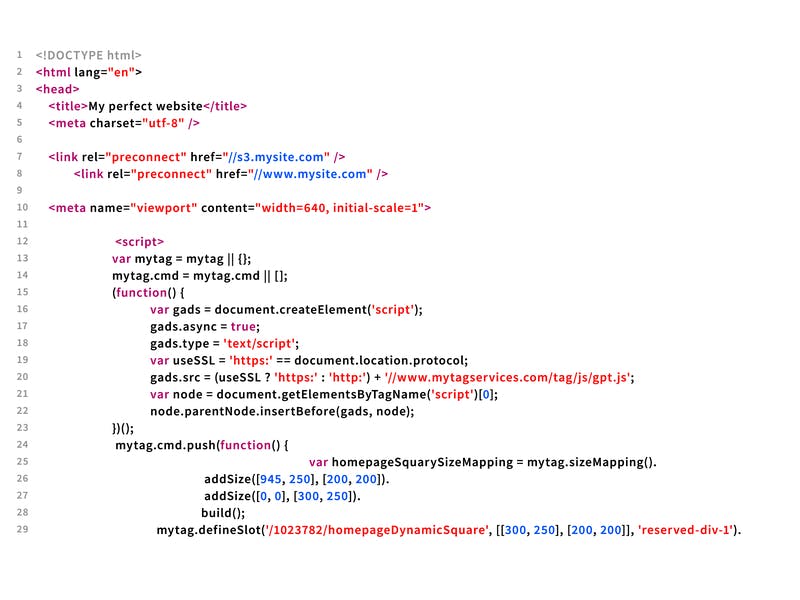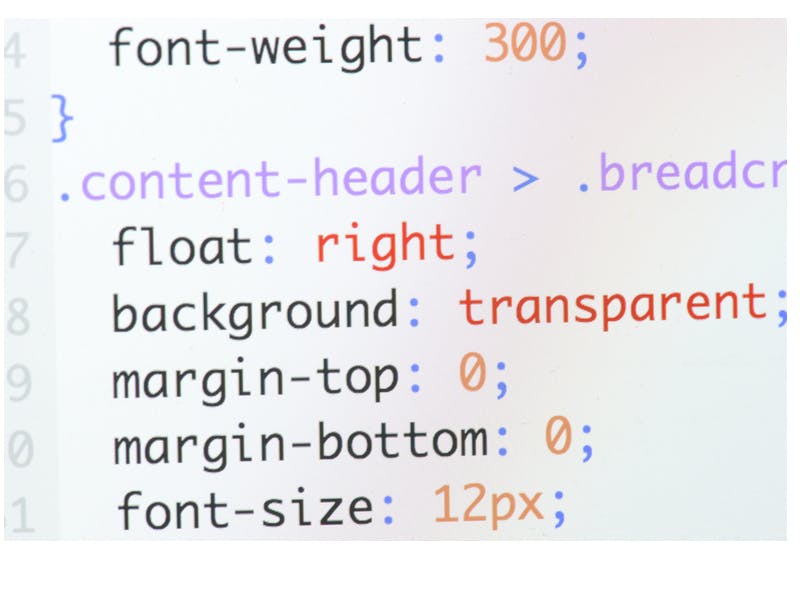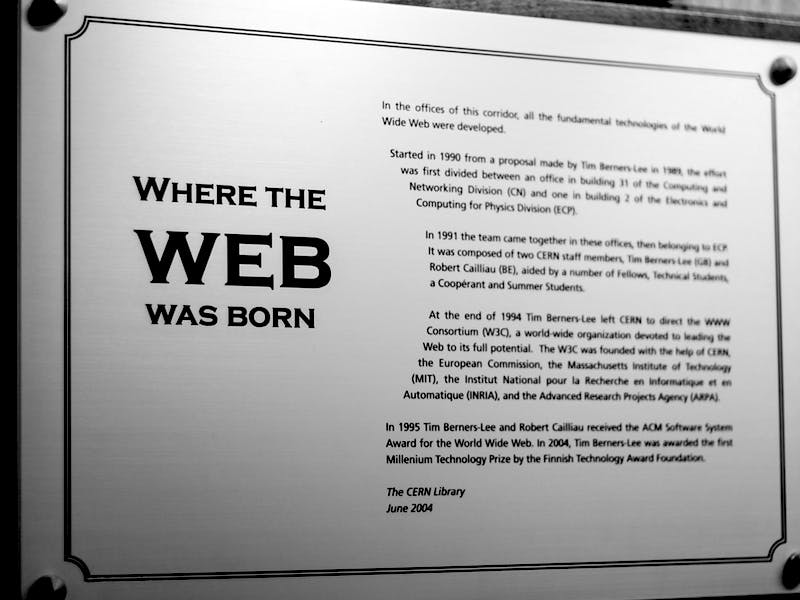Internet 101: A Brief History of HTML
From the launch of the world's first website to the extensive capabilities now used to design and produce websites, HTML remains the foundation of the Internet.
"HTML" stands for "hypertext markup language," which is the standard language used to create Web pages. Tim Berners-Lee was the original developer of HTML, called HTML 1.0. The HTML of the early 1990s was a much simpler and less powerful version of the language, and it has undergone many transformations in the three decades that it's been in use. From the launch of the world's first website to the extensive capabilities now used to design and produce websites, HTML remains the foundation of the Internet.

Aug. 6, 1991: Tim Berners-Lee launched the first Web page.
Oct. 29, 1991: Berners-Lee published a document called "HTML Tags," which listed and described the first 18 HTML tags.
November 1991: Berners-Lee created the first protocol design, named HTTP v0.9, as a way to exchange hypertext documents between a computer server and a Web browser.
Dec. 12, 1991: Paul Kunz launched the first Web server in the United States.
March 9, 1992: Pei-Yuan Wei developed the ViolaWWW web browser, which was the first one to support scripting and forms.
April 12, 1992: Bare Bones Software released a text editor called BBEdit as freeware. It would soon be adapted to create HTML code.
July 18, 1992: The first photo was uploaded to the Web.
April 22, 1993: Mosaic 1.0 was launched. Mosaic was one of the first Web browsers that used a graphical interface. Either an IP address or a URL could be used to retrieve a page.
Nov. 30, 1993: The ALIWEB search engine was released to the public at a conference.
January 1994: Jerry Yang and David Filo created a database of websites, which was later named "Yahoo!"
July 3, 1994: Martijn Koster created robots.txt, a standardized file that would be read by search engines and contain rules for accessing the site.
July 13, 1994: The first online HTML validator was created as a way for creators to check for errors.
Oct. 13, 1994: The browser Netscape Navigator was created, initially named Mosaic Netscape 0.9.
Oct. 27, 1994: AT&T placed the first banner ad on a website.
November 1994: GeoCities was founded, giving the general public a simple way to create their own websites.
April 10, 1995: The Opera Web browser was introduced.
April 13, 1995: The Lycos search engine was developed.
May 25, 1995: Web designers made an official website for the movie Batman Forever, the first website made to market a film.
June 8, 1995: PHP 1.0, a scripting language, was designed.

Aug. 16, 1995: Internet Explorer 1.0 was launched.
Sept. 18, 1995: Netscape Navigator 2.0 was launched, featuring many new enhancements.
November 1995: FrontPage 1.0 was created as a "what you see is what you get" (WYSIWYG) editor for Web developers.
Nov. 24, 1995: HTML 2.0 was released, including new tags and support for features such as graphics and tables.
Dec. 17, 1996: Cascading Style Sheets Level 1 was created as a way of describing how to display certain document elements that are written in HTML.

Jan. 14, 1997: HTML 3.2 was released, featuring new tags.
June 11, 1997: Netscape Communicator 4.0 was released.
October 1997: Internet Explorer 4.0 was released by Microsoft.
October 1997: Dynamic HTML was introduced as a combination of HTML, CSS, and JavaScript.
Dec. 18, 1997: Specifications for HTML 4.0 were released.
January 1998: Netscape released the source code for Netscape Communicator 5.0 as an open-source project. This would evolve into the Mozilla Project.
May 12, 1998: CSS 2 was introduced, including new design features.
Sept. 4, 1998: Google was started as a research project to return relevant search results using a specific algorithm.
April 1999: The term "Web 2.0" was introduced, referring to a new development phase of the Internet that would feature user-created and -shared websites.
Jan. 26, 2000: XHTML 1.0 was introduced as a markup language that integrated XML and HTML.
Aug. 24, 2000: Macromedia Flash 5.0 was launched, featuring object-oriented programming language.
Aug. 27, 2001: Internet Explorer 6.0 was released, bundled into the Windows XP operating system.
June 5, 2002: Mozilla 1.0 was released as an open-source Web browser.
June 23, 2003: Safari 1.0 was released by Apple as its proprietary Web browser.
Nov. 9, 2004: Mozilla released Firefox 1.0, which featured better security and speed as well as plug-ins that allowed for customization.
Jan. 14, 2005: John Resig created the JQuery JavaScript library for Web developers to use when creating recurring events and animations.
Sept. 2, 2008: Google Chrome was released in beta format.
May 25, 2010: The term "responsive Web design" was coined, describing the optimization of HTML documents for display in different browsers.
Resources
- Why HTML Is Not a Programming Language
- What Is HTML? An HTML Tutorial
- Introduction to HTML 4
- Commonly Used HTML Tags
- Tags: What Are They, and How Do They Work?
- Structural Tags: Introduction to HTML
- Help With HTML
- Creating Basic HTML Files
- HTML Cheat Sheet
- Commonly Used HTML Tags
- HTML and CSS
- What Is HTML?
- History of HTML
- A Brief History of HTML
- Web Design History
- Introduction to HTML
- A Brief History of HTML
- Origins of HTML
- Overview of HTML History
- History and Relationships of SGML, HTML, and XML
- History of the Web: Early Data-Sharing on the Internet
- The Birth of the Web


